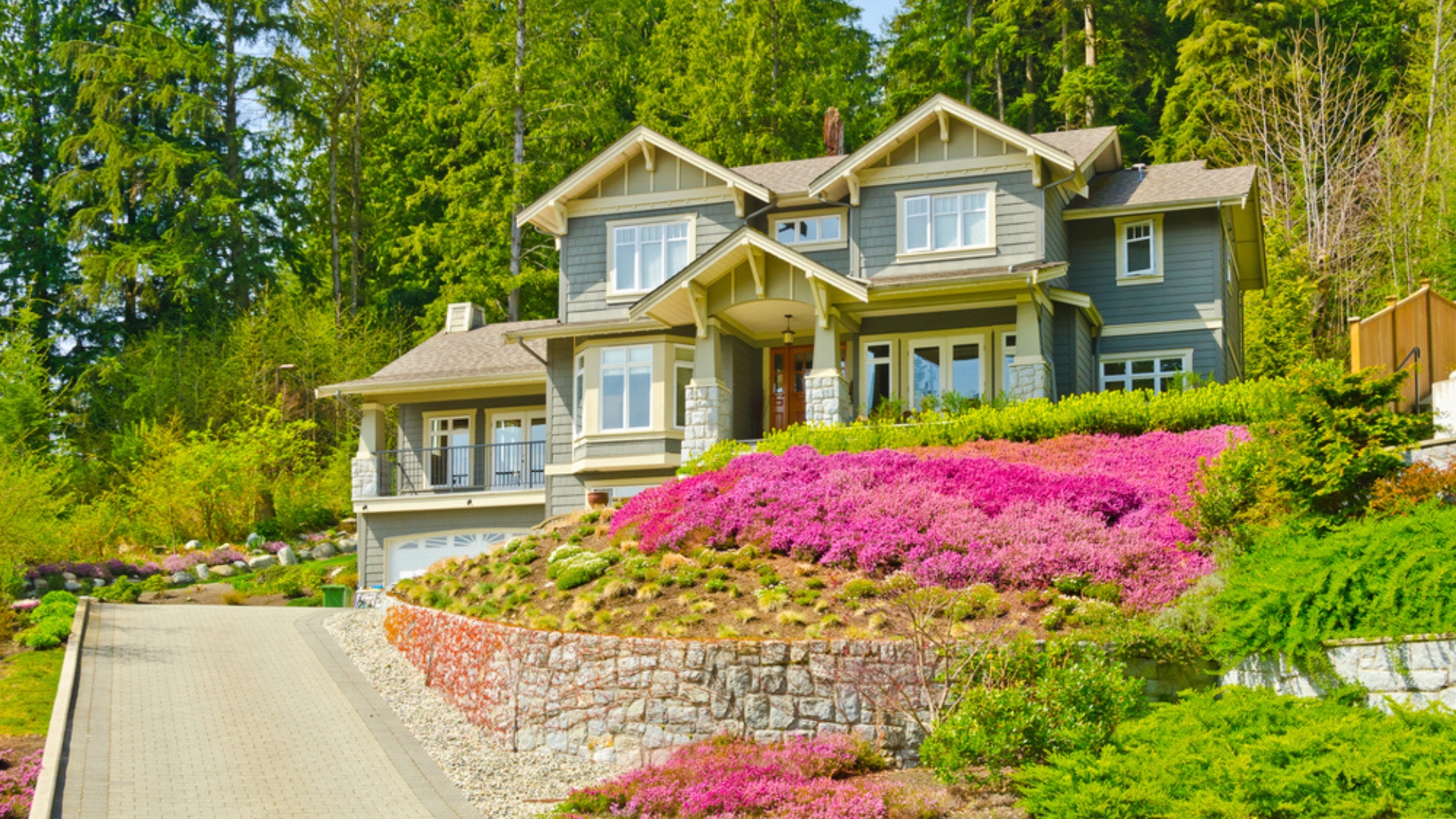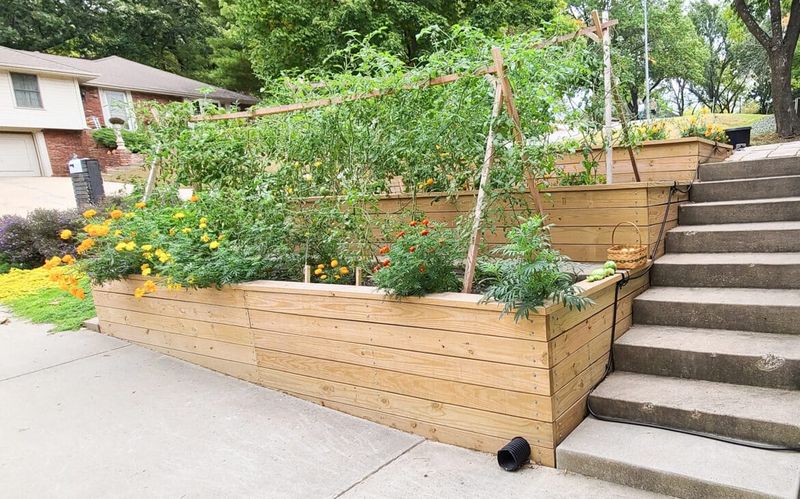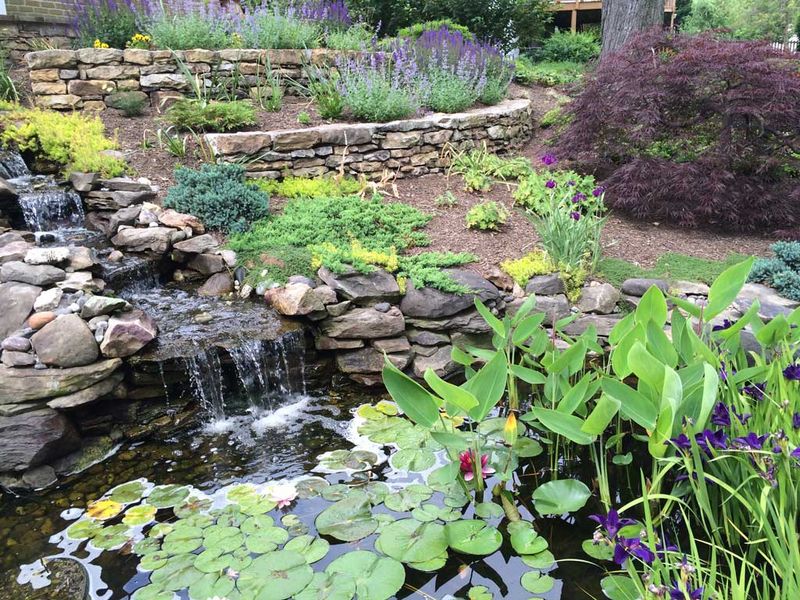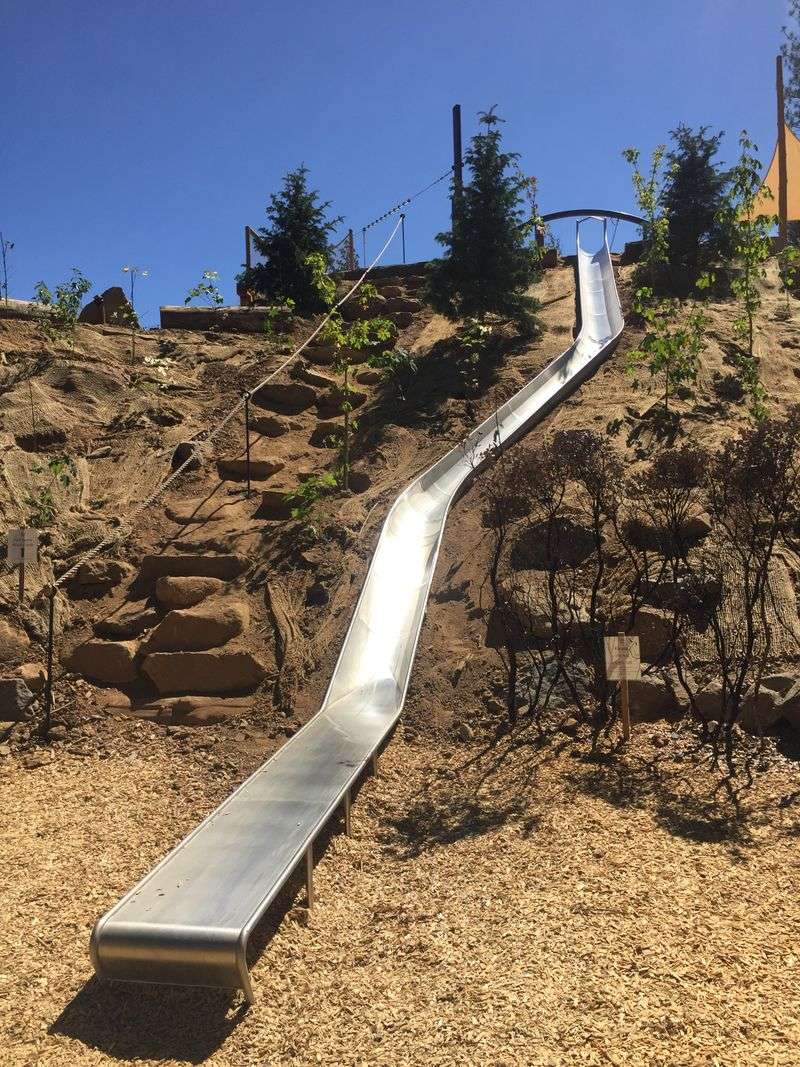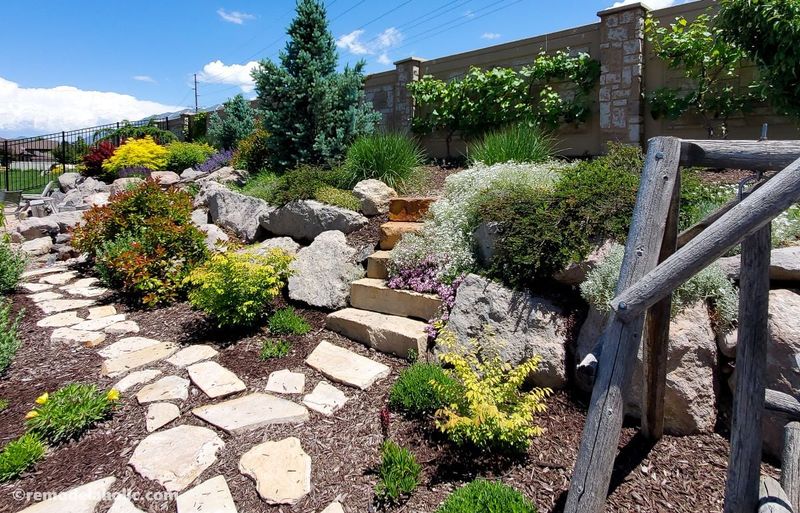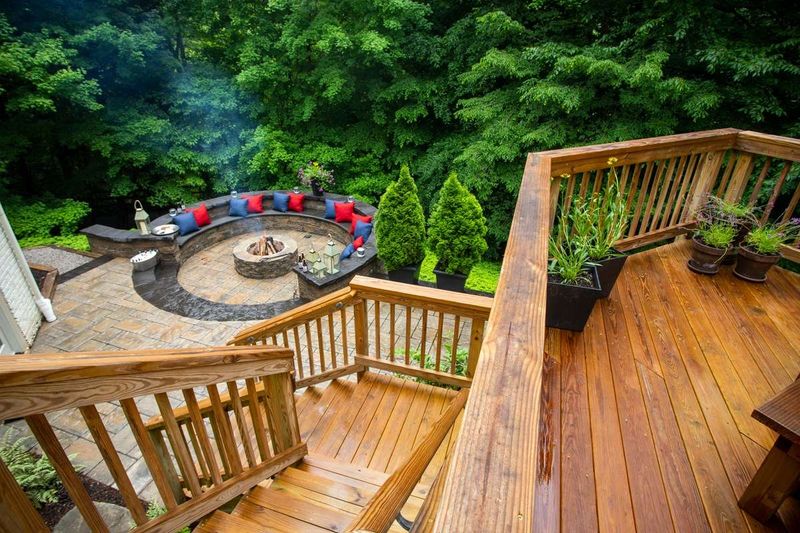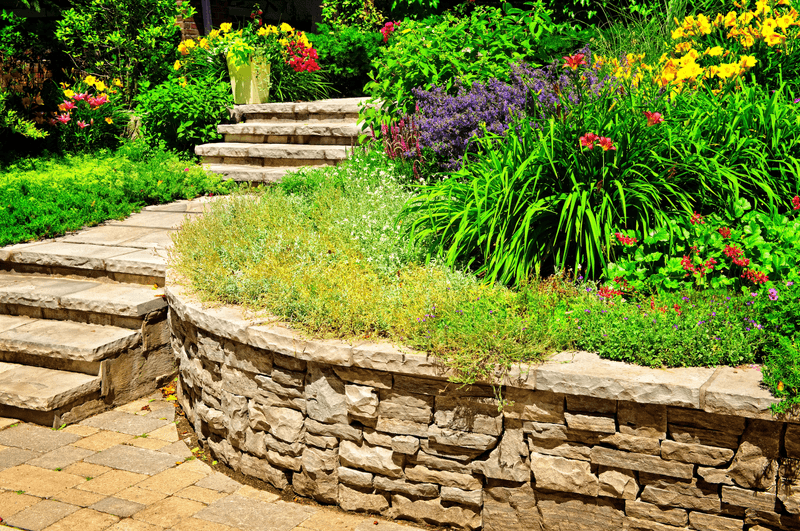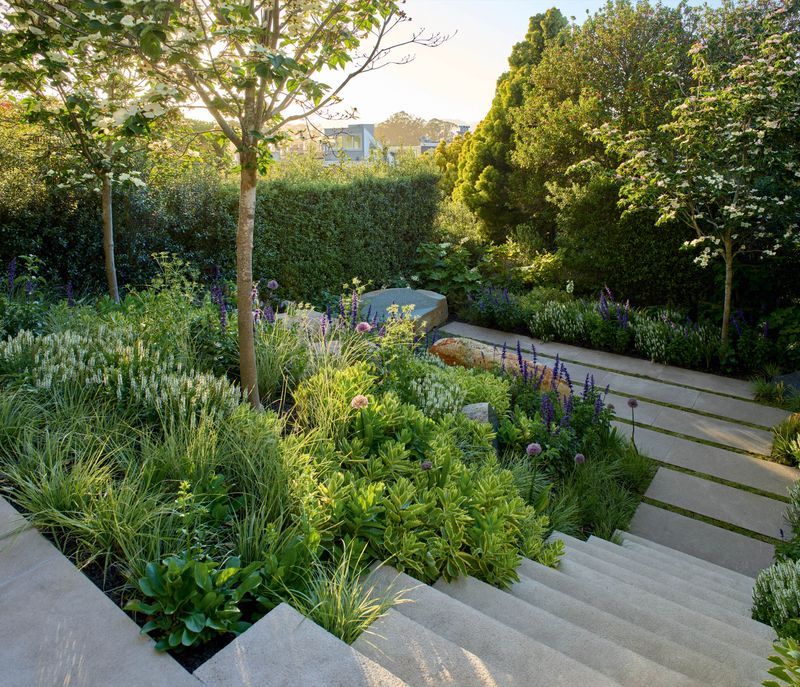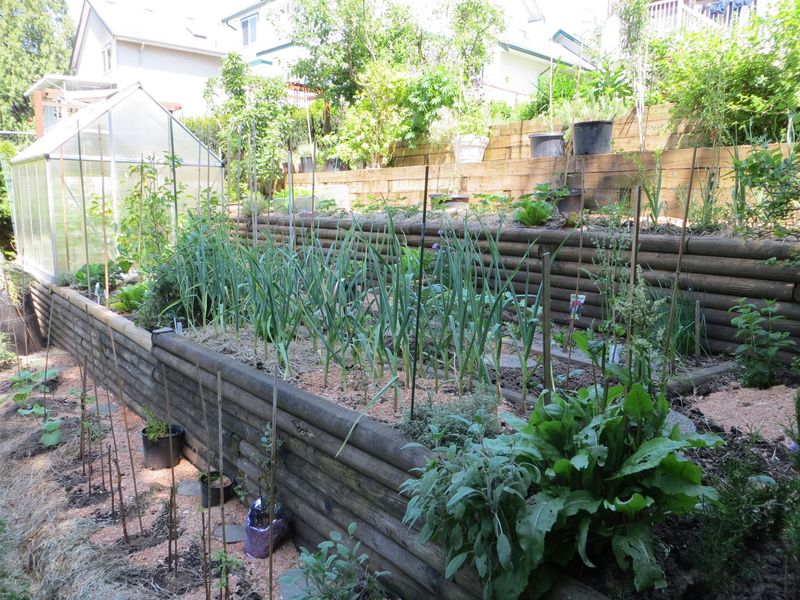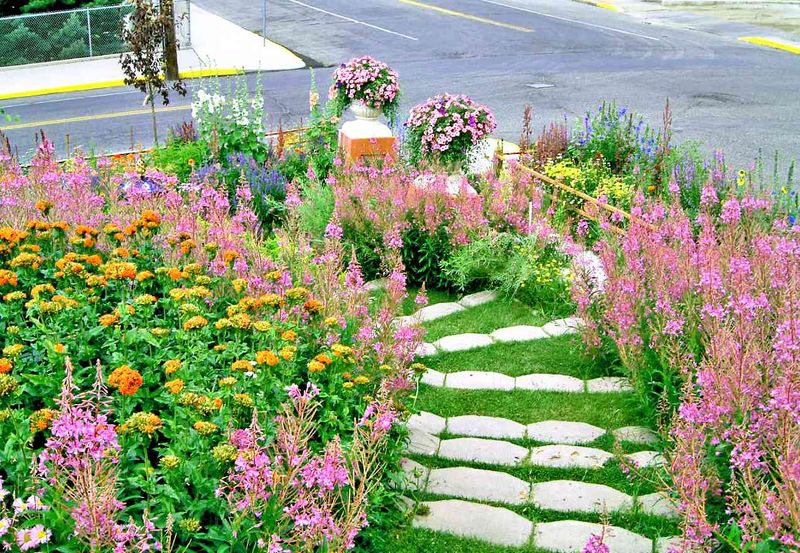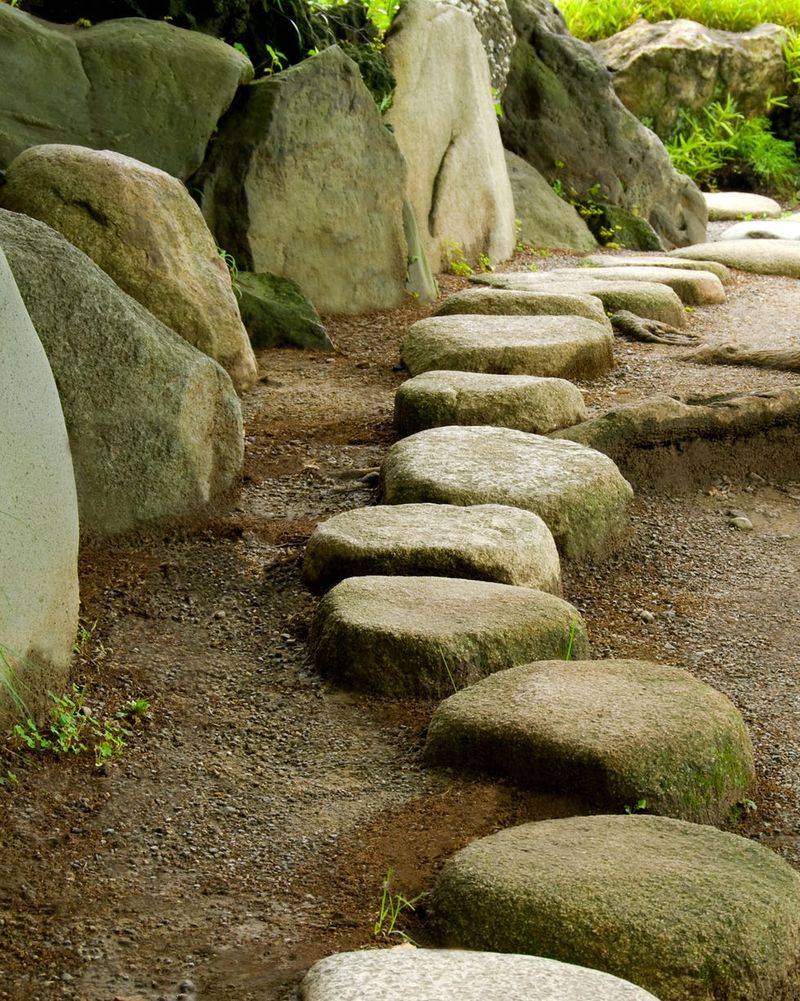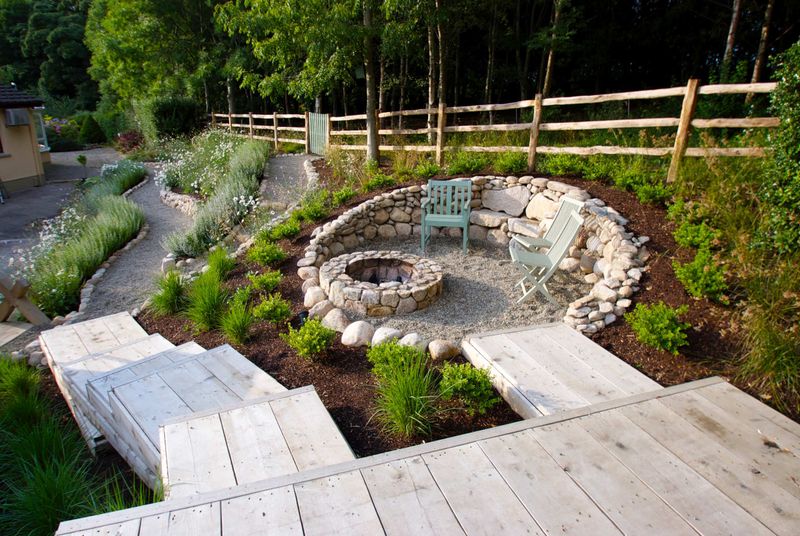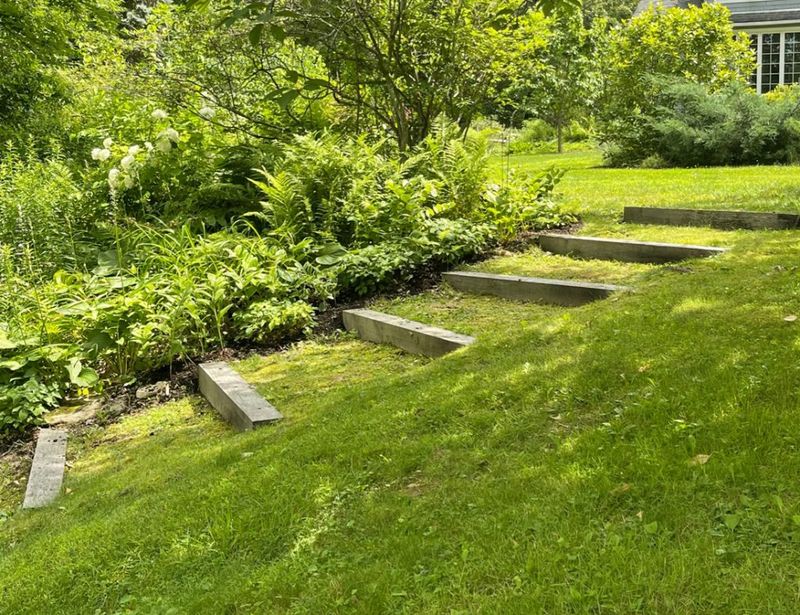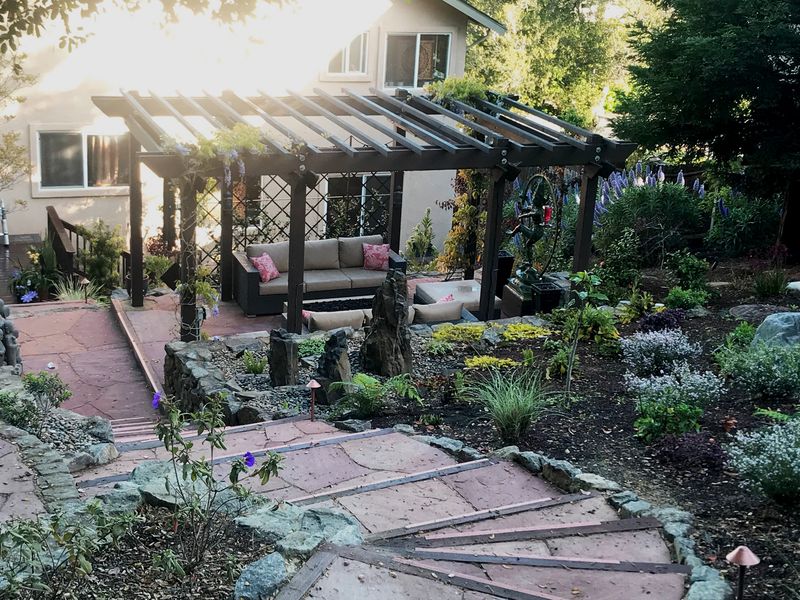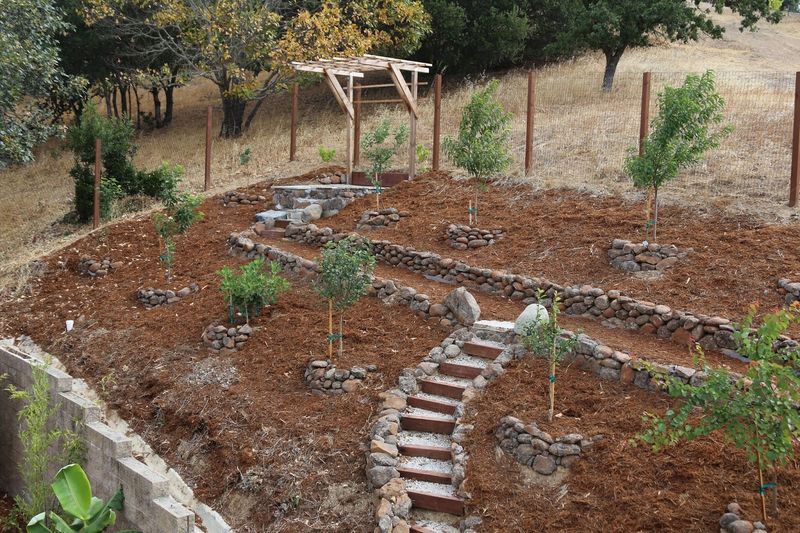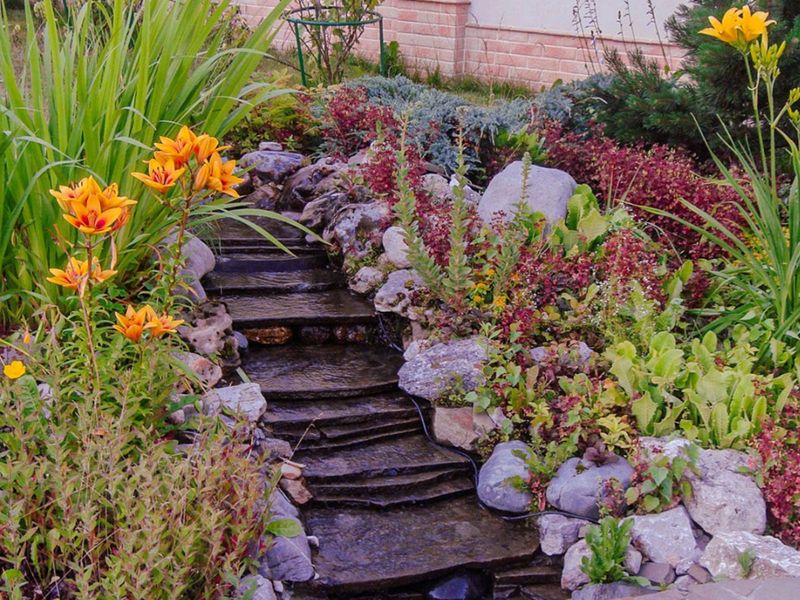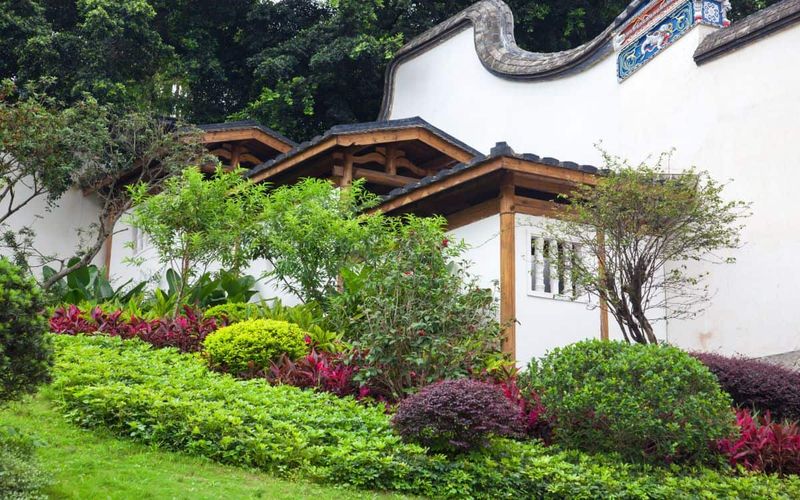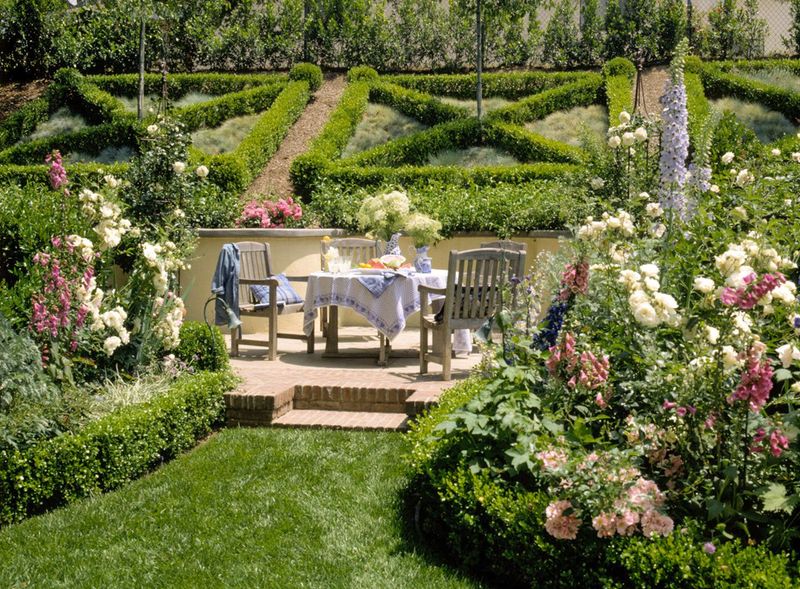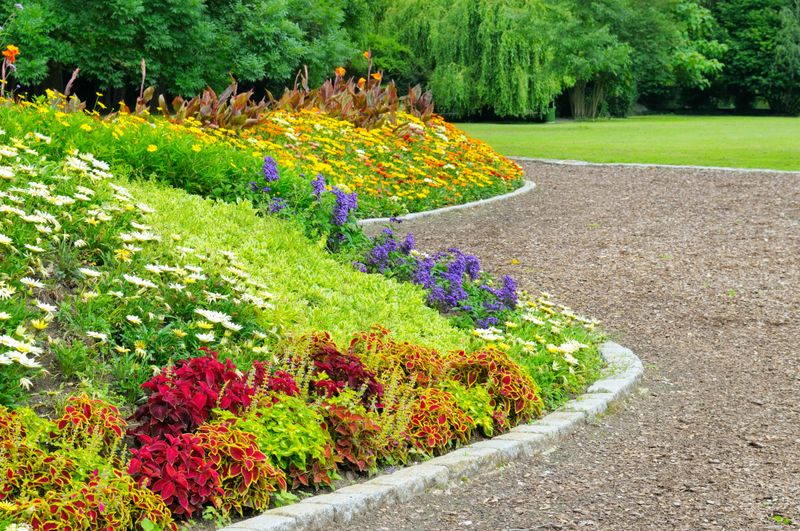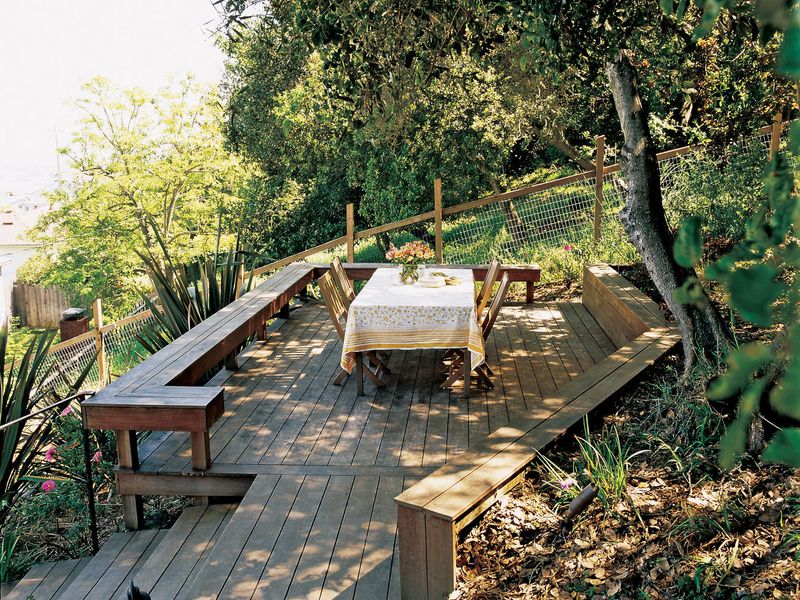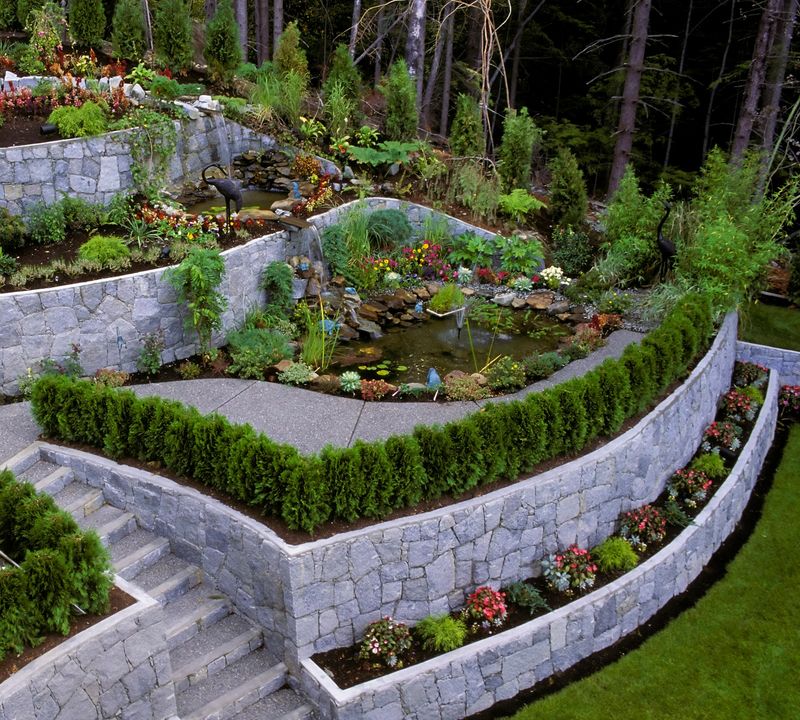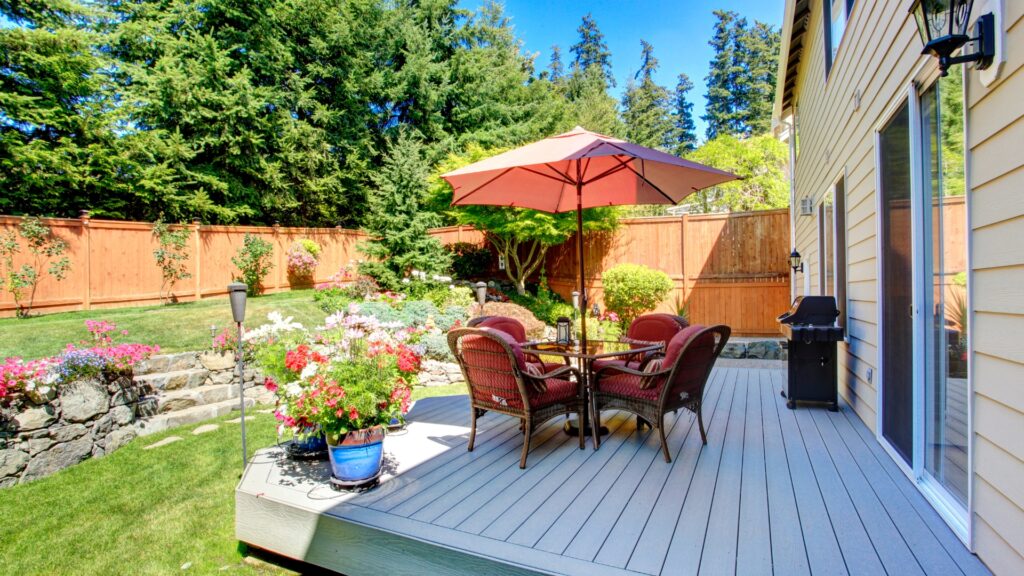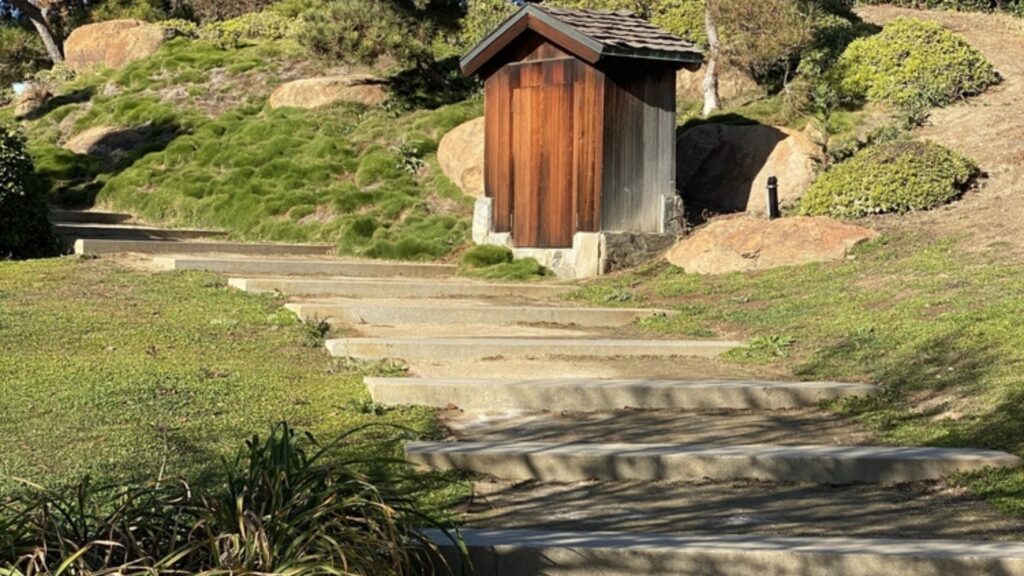Ah, the sloped yard—every gardener’s headache and a designer’s daydream. When I first saw mine, I pictured myself slip-sliding away with every downpour.
But that tricky incline became my creative playground. With a dash of vision, a pinch of humor, and some good old trial and error, I turned that hill into a hillside haven.
Sure, I hit a few bumps (and maybe the ground), but the payoff? Worth every stumble. So grab your shovel—let’s turn that uphill battle into a stunning success!
1. Terraced Garden Beds
Terraces not only provide structured elegance but also thwart erosion. By stepping the land, you create flat planting areas. Roses and azaleas love these conditions!
The simple engineering of tiers turns an unruly hill into a gardener’s playground. Each level can host a different plant family, creating visual variety and function.
Trust me, it’s like having mini-gardens stacked on top of each other. Just be sure to add some steps or paths for easy access to each level. Watch out for the bunny napping in the shade!
2. Rocky Waterfall Feature
Turn your slope into a tranquil oasis with cascading water. Rocks help guide the flow, creating soothing sounds that echo peace.
Waterfalls also attract wildlife, offering a refreshing drink. Balancing rocks and water can be an art form, but once perfected, it’s a source of endless joy.
Add a bench nearby, you won’t regret it. Imagine the envy of neighbors as they hear your personal symphony of splashes and gurgles.
3. Sliding Hill for Kids
Use that slope to your kids’ advantage. A built-in slide promises hours of fun! Forget about playground envy. Your yard becomes the place to be.
Safe and colorful, slides blend perfectly with nature when bordered with soft grass or mulch. It’s a magnet for laughter and energy.
Let the children’s imaginations run wild as the incline takes them on adventures. Plus, no need to worry about mowing there! Just be prepared for giggles and perhaps the occasional mud pie.
4. Zen Garden Pathway
Paths are more than mere connections; they’re journeys. A Zen pathway transforms a slope into a meditative stroll. Each turn offers a new perspective.
Gravel crunches underfoot, whispering serenity. Add stones strategically, perhaps a bonsai for contemplation. My own path has become a daily ritual. A peaceful start or end to my day.
The beauty lies in simplicity, where every element serves a purpose. Alongside, plant low-maintenance greenery to keep the walk pleasant and inviting.
5. Tiered Decking
Forget boring flat decks—go tiered! Multiple levels mean multiple views. You can sunbathe on one, dine on another.
The slope’s natural shape guides the design. It’s like having extra rooms outdoors. Decks provide space for entertaining, gardens, or quiet contemplation.
Plus, the layered effect adds architectural interest, drawing the eye upwards. Just remember to include secure railings for safety.
6. Retaining Wall Seating
Walls don’t just hold back earth; they invite gatherings. Create a social nook by incorporating seating into retaining walls. It’s a clever way to blend function with leisure.
You can host gatherings on the slope, where friends perch comfortably on the wall. This setup offers durability, reducing maintenance worries. Cushions add comfort and color.
The wall becomes more than a boundary. It’s a feature. Remember to select materials that complement your home’s style. Who knew walls could be so inviting?
7. Fruit Tree Terraces
Fruit trees are nature’s candy dispensers. Planting them on terraces turns slopes into productive paradises. Apples, peaches, or cherries can flourish here.
Terracing controls water flow, giving trees what they need without erosion risks. I’ll never forget the first apple I plucked from my tree terrace; it tasted like victory.
As the seasons change, so do the colors. Terraces ease harvesting too, no ladders needed! Consider it a sweet blend of beauty and bounty.
8. Sloped Vegetable Garden
Fresh veggies on a slope? Absolutely! Hillsides are perfect for root vegetables like carrots and potatoes. The natural drainage is ideal, preventing soggy roots.
With careful planning, you can rotate crops and maximize yield. Raised beds add structure, helping to manage the incline.
Each visit to the garden feels like a mini-adventure, discovering what’s ready to harvest next. Just watch out for ambitious squirrels eyeing your produce!
9. Wildflower Hillside
Imagine a hill alive with wildflowers. A scene straight from a fairy tale. Wildflowers offer low-maintenance beauty, attracting pollinators like butterflies and bees.
They paint the landscape with seasonal colors. Plant it and watch as nature took over, each year more spectacular than the last. Wildflowers adapt easily, making them perfect for slopes.
Once established, they need little attention. It’s a hands-off approach to a gorgeous garden. You’ll find yourself stopping to smell the flowers, and snap a few photos.
10. Mossy Rock Garden
Moss brings a touch of the ethereal to your yard. A mossy rock garden feels like stepping into a fantasy realm. The lush green carpets stones, softening the terrain.
Moss gardens need shade, but the reward is a lush retreat. They’re incredibly low-maintenance, no mowing required!
Each stone tells a story, draped in mossy coats. Children love exploring the mini-landscapes, making up stories of their own.
11. Hillside Fire Pit
Who doesn’t love a good fire pit? Carve out a space on your slope for evening gatherings. The hillside provides natural windbreaks, making fires safer.
Enjoy countless nights making marshmallows and stories on your hill. Arrange seating in a semicircle for ultimate coziness.
Stones or bricks create a sturdy pit, while the surrounding landscape adds charm. Just imagine the contentment of watching flames dance under the stars. And yes, s’mores are mandatory.
12. Stepped Stone Stairway
Stairs are an art form on a slope. A stepped stone stairway transforms hard-to-navigate hills into accessible pathways.
Each step is a masterpiece, framed by nature. Stairs invite exploration, connecting various elements of the garden. It’s a journey with each footfall, from top to bottom.
Plus, they’re an exercise in creativity as well as leg muscles! Just be sure to clear away leaves to keep them safe.
13. Pergola with Vines
Pergolas add vertical interest. Build one on a slope, and you have a sanctuary. Vines wrap around, creating a living wall.
It’s the perfect spot for a midday retreat. Pergolas also offer shade, which is crucial for hot days. You’ll find it becomes a favorite gathering spot.
Add some hanging lanterns for evenings—you’ll never want to leave. Plus, vines provide privacy, a natural curtain against the world.
14. Hillside Orchard
An orchard on a slope combines utility with pleasure. Rows of trees, like apples and plums, thrive on the incline. The slope aids in drainage, a friend to roots.
I recall my first orchard picnic; the taste of fresh-picked fruit was unmatched. Orchards create microhabitats, inviting wildlife to join in.
Each season paints a different picture, with blossoms or fruit hanging heavy. Just add a bench to sit and savor the scenery. Who knew a slope could bear such abundance?
15. Rain Garden with Native Plants
Embrace rain with a garden designed for it. Plant natives that love wet feet. A rain garden captures runoff, preventing erosion.
It’s a habitat for frogs and birds, a thriving ecosystem. Stepping stones guide you through, offering glimpses into nature’s work. Native plants adapt well, requiring less care.
With each rainfall, the garden evolves, telling a story of water and land harmony. It’s nature’s way of saying ‘thanks for the space.’
16. Native Grassland
Grasses may seem simple, but they hold elegance. Native grasses, hardy and free-flowing, transform slopes into whispering seas.
They dance with the breeze, a spectacle to behold. These grasses require little maintenance, thriving where others falter. They provide shelter for small critters, adding life to the landscape.
Once established, they become a self-sustained ecosystem. Remember, simplicity often brings the greatest rewards. It’s a masterpiece of motion and tranquility.
17. Hillside Seating Nook
Seating nooks invite relaxation. Nestled into a slope, they offer a private retreat. Chairs and a table create a perfect spot for morning coffee or evening drinks.
The slope provides a natural backdrop, framing your view. It’s a personal oasis, away from the world’s hustle. Surround it with greenery for added seclusion.
Trust me, you’ll wonder how you ever lived without it. Grab a book and let the hours slip by.
18. Contour Planting
Contours mimic nature’s curves. Planting along the contours helps manage rainwater and erosion. I experimented with shrubs and perennials, creating sweeping patterns.
Each curve tells a story of flow, guiding the eye naturally. It’s an art form that changes with seasons. Contour planting enriches soil health, a benefit often overlooked.
Plus, it’s fun to design! The undulating lines create movement, even when standing still. You’ll find yourself drawn into the landscape’s embrace, a dance between earth and plant.
19. Sloped Picnic Area
Picnics feel more adventurous on a slope. Create an area with rustic tables and benches. Lunch tastes better under open skies with a gentle breeze.
The incline adds thrill to the experience, a subtle reminder of nature’s quirks. Surround the area with trees for shade and flowers for color.
It’s the perfect spot for family gatherings or romantic escapes. Just be sure to pack a secure picnic basket. You wouldn’t want it rolling downhill!
20. Living Retaining Walls
Why have plain walls when they can live? A living retaining wall combines engineering with ecology. Plants cascade over, softening the hard edges.
It’s a colorful display, changing with the seasons. They offer benefits beyond beauty, like insulation and habitat creation. Each visit brings new surprises, as plants grow and bloom.
Living walls require careful planning, but the payoff is huge. Imagine a wall that evolves, each day a bit more alive. It’s a tapestry of stone and flora.
21. Hammock Hideaway
A slope is the perfect excuse for a hammock! Anchor one end higher up, and let gravity do the rest. Suddenly, that incline becomes a swinging sanctuary.
Surround it with soft grasses, maybe even a few ferns for a jungle vibe. It’s an instant invitation to nap, read, or cloud-watch.
My hammock became my afternoon escape—swaying gently with a book in hand and not a care in sight. Just make sure it’s well-tied… unless you enjoy unexpected excitement.
22. Sculptural Focal Point
Use the slope to highlight art. A bold sculpture or oversized urn on the incline draws the eye and anchors the landscape. It’s drama with a purpose.
The elevation gives it a pedestal effect, turning even a simple piece into a statement. Surround with gravel or ornamental grass to make it pop.
I placed an abstract metal piece halfway up my hill—and guests always ask about it. It adds personality, and best of all, zero weeding around it!
23. Slope-Side Garden Shed
Turn that tricky terrain into a storage solution with a slope-side garden shed. Nestled into the incline, it blends seamlessly into the landscape while keeping your tools, pots, and gear neatly tucked away.
Building into the slope saves space and adds a charming, storybook feel. Add a green roof or climbing vines to integrate it even more naturally. I gave mine a vintage door and a lantern—it became the most admired feature in my yard!
It’s functional, beautiful, and adds a cozy focal point to the hillside. Plus, everything you need is just a few steps away from your next gardening project.

